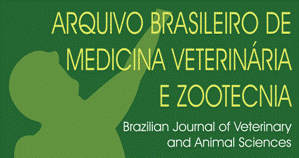Genetic parameters and components of (co)variance for birth weight (BW), weaning weight (WW), scrotal circumference (SC), weight gain at post-weaning (WG), and muscle score (MUSC) were obtained with univariate, bivariate and multivariate models, using a dataset of 69,525 Nellore cattle. The parameters were estimated by restricted maximum likelihood method. Direct and maternal additive genetic effects, group of management, and maternal permanent environmental effect were adjusted as random effects, while contemporary group was adjusted as fixed effect. Multivariate approach allowed higher estimate heritability for postweaning traits (0.45; 0.31 and 0.25, respectively for SC, WG and MUSC) than univariate (0,42; 0,21 and 0,22) and bivariate models (0,39; 0,25 and 0,24). Similarly, the genetic correlations were higher in the multivariate approach. These results indicate that reducing the bias provided by the mutivariate model improves the estimates of genetic parameters and shows that the results of bivariate and univarite models are underestimated. Selection for muscle score presented great potential for correlated response in other traits and its use in selection programs can be a useful tool for breeders.
bovine; genetic correlation; heritability; selection
